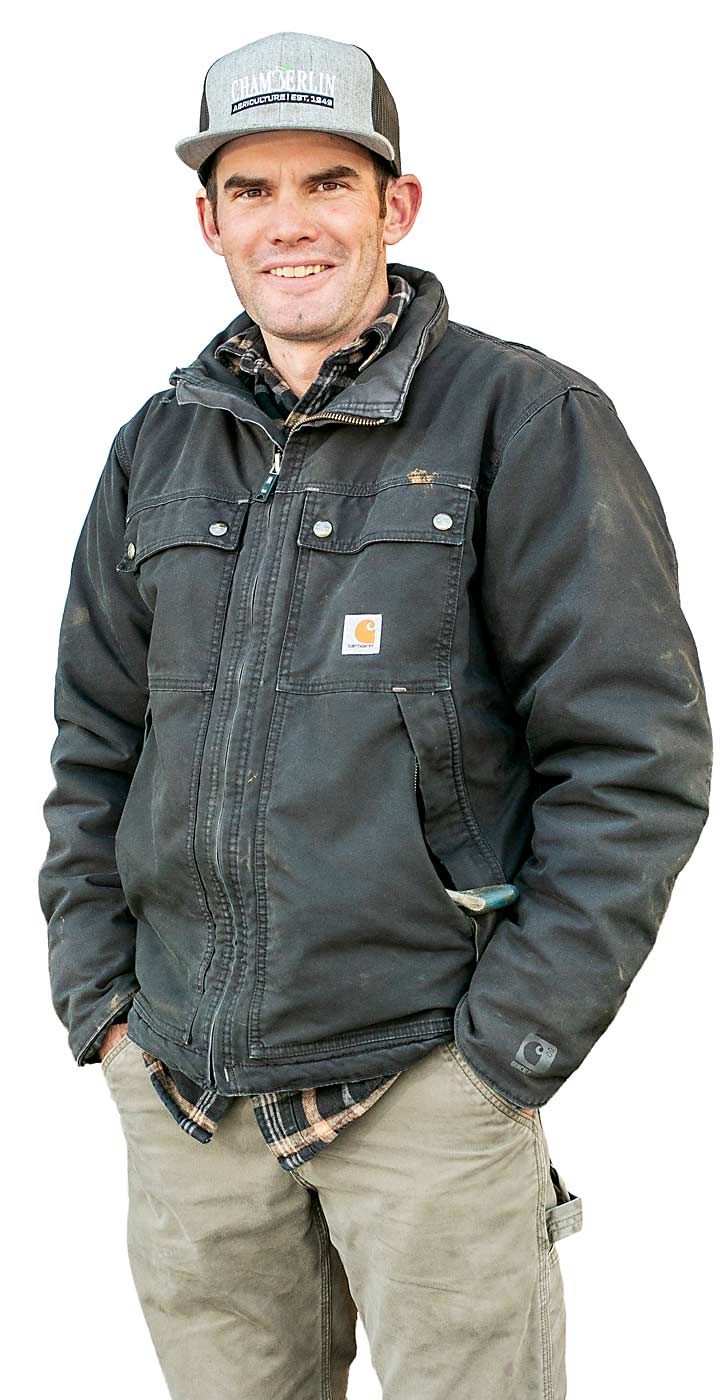family background / Herbie returned to the family farm with his wife, Dani Annala, after working as a metal fabricator in Portland, Oregon. He’s the son of Bev and Tim Annala.
grower / Hood River, Oregon
age / 33
crops / Pears, apples, wine grapes
business / Annala Orchards Inc.
How did you get your start?
I grew up in the same house that my parents live in now.
When I was a kid, I’d help my dad change irrigation water. At the time, most every block was by hand line. Doing the jobs as a kid, you’re stuck doing the grunt work.
Farming wasn’t appealing enough to me when I was younger. I didn’t see the possibilities that come with farming. For me, I really didn’t intend on coming back or doing anything on a farm in general.
When I returned to help my dad out, I wasn’t planning on staying. I remember feeling like I didn’t have a clue what I was doing. I didn’t go to school for this, so I began attending grower meetings, reading articles and paying attention to what the other farms were doing.
Then, before I knew it, the roles started to change from not knowing what I was doing, to doing what was needed, to being aware enough to come up with my own solutions.
How are you planting new pear blocks?
We are putting them in on our personal variation of a V-trellis and planar systems. When I came back to the farm, the tightest pear block was 17 by 9 feet. Now we’re consistently planting 12-by-5-feet vertical trellis.
We tried our hand with V-trellis, but we’ve found it to be too complicated over the course of a season, for what it’s worth. Because of that, we’re focusing on vertical trellis with the hope it’ll be more of a consistent block to manage.
What were those system lessons?
The V-trellis doubled the cost compared to a vertical in putting the rows up. It’s more complicated to make V-trellis sturdy. It’s also harder to train a crew how to prune and pick it, especially on the inside row.
If you aren’t careful with your pruning, then you’re missing fruit you can’t reach when you’re picking. V-trellis is also more difficult for dealing with fire blight removal.
It’s easier to see fire blight when you can look at both sides of the tree rather than trying to go down the middle of a V-trellis row. Our variation of the V-trellis has trees planted about 2 feet apart with a 10-degree vertical angle.
We made mistakes by not bracing well enough in the first place, so the trees either want to move out or they tend to pull in.
We learned from those structural mistakes and it has proven to be a more complicated system in all aspects.
What have you learned with the vertical system?
What we’re moving toward is a two-leader vertical trellis down each row. The idea is to make every leader in the block uniform.
We won’t have one leader in the middle that is more aggressive than the outside leaders.
We’ve tried three- and four-leader trees and it’s more difficult to get the outside leaders growing. When you have that variability, pruners have to think differently whether it’s the inside leader or the outside leader.
Installation tips for the independent grower?
Because we are doing the work ourselves, we’re trying to get away from the labor-intensive things when installing the block.
For instance, we run low temporary wires to help get the trees started, instead of using a piece of bamboo for each tree. Putting in the extra wire saves us time now and in a couple of years we’ll either remove it or move it up to the top of the trellis to support the new growth.
Any advice for a young grower new to farming?
I can’t imagine trying to build a new orchard block from scratch. I returned to the family farm that was consistently operated and I didn’t need to find resources like a reliable crew or finance a bunch of machinery.
Based on my own experiences, if I was trying to start fresh without family support, I’d look for opportunities with an established, working operation.
That way you’re not starting out on your own with a big loan and you can possibly get your foot in the door to maybe take over an operation.
— TJ Mullinax







Leave A Comment